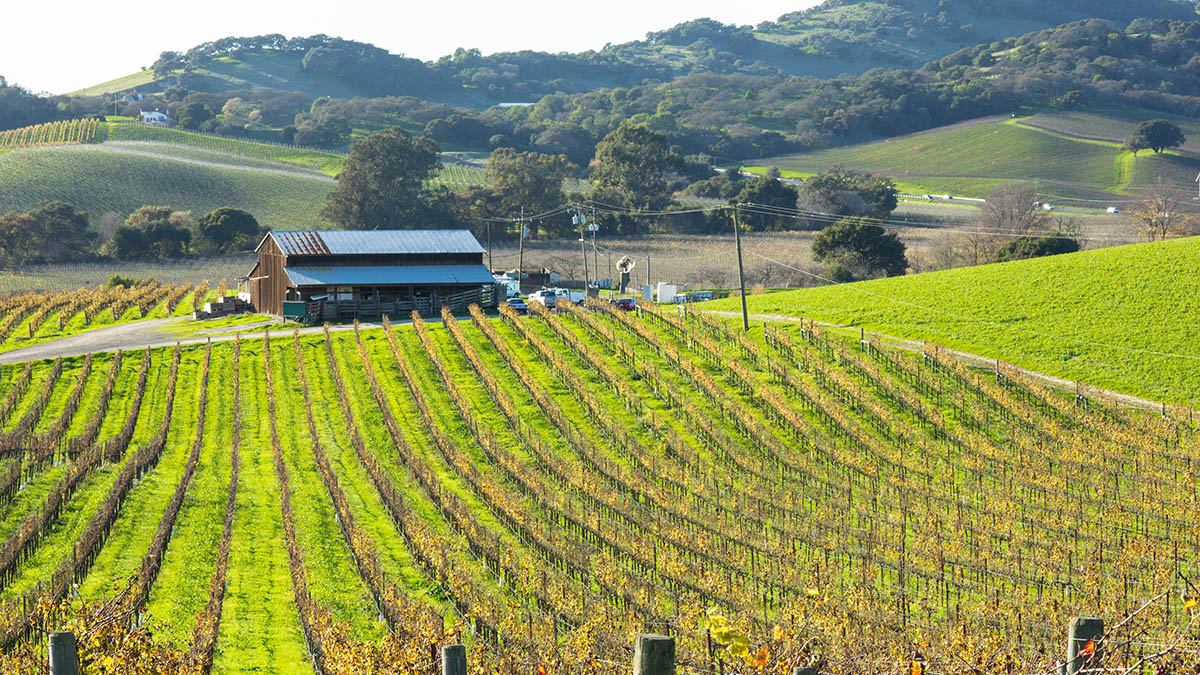Three California wineries famed for their Brut sparkling wine have turned a new leaf for grid resiliency measures in an area prone to wildfires in recent years.
The Roederer Estate, Scharffenberger Cellars and Domaine Anderson wineries in Mendocino County, California have turned to Coldwell Solar and ESS Tech for solar-plus-storage solutions. All three are using ESS Tech’s iron and saltwater long-duration energy storage system providing up to 12 hours of back-up power.
ESS, a Wilsonville, Oregon-based long-duration energy storage system manufacturer, announced it will deliver three Energy Warehouse systems to Coldwell, a Rocklin, Calif.-based commercial, industrial and utility solar developer. ESS will provide three Energy Warehouse systems across the winery microgrid, providing 1.5 MWh of energy storage backup to the on-site solar systems.
The systems will be installed in a solar-plus-storage microgrid. Coldwell Solar worked with the wineries to design a system that met their needs and the microgrid is expected to be operational in late 2023.
To date, Coldwell Solar has developed solar istallations for several winery operations including a 1.2 MW ground-mounted solar array for J. Lohr Vineyards in Paso Robles, Calif.
“The wineries needed an energy storage solution that could withstand the elements and operate safely in a wildfire-prone region,” said Sean Hood, chief operating officer of Coldwell Solar. “With its inherent safety and low carbon footprint, ESS technology was the only option that meets the energy resilience and sustainability needs of our customer.”
The long-duration storage system will safeguard Roederer, Scharffenberger and Domaine Anderson against the impacts of Public Safety Power Shutoff (PSPS) events and other grid interruptions. The measures support back-up power operations to enable around-the-clock wine production, showcasing the role that energy storage can play in rural agricultural applications.
In addition, the Mendocino County, Calif. Winery will avoid demand charges and realize energy savings by utilizing the 12-hour Energy Warehouse system to reduce grid electricity use during peak periods. The ability to reduce grid demand during late afternoon and evening periods will also support the stability of the local grid.
“We’re pleased to support these wineries’ commitment to sustainability while providing the energy security needed to continue delivering economic benefits to the Mendocino region,” said Hugh McDermott, senior vice president of business development at ESS.
The Energy Warehouse container provides 400 kWh of peak energy over a 12-hour battery discharge whose module’s average life is more than 20,000 cycles. The container weighs 41.9 tons at wet weight and measures 40 feet by 8 feet, standing 9.5 feet high. The system uses recycled iron components and abundant saltwater, making its electrolyte system fully recyclable.
Wildfire risk
After the Nash Fire of June 2020 consumed ten acres of Mendocino County woodland just three miles from Roederer, Scharffenberger and Anderson’s Philo, Calif., estates, more wine country mainstays could be turning to grid resiliency measures such as solar-plus-storage microgrids.
In January 2023, the California Public Utilities Commission (CPUC) adopted new rules, rates and tariffs designed to lower barriers to the development of microgrids. The CPUC noted that customers are already allowed microgrids, but determined more has to be done to facilitate microgrid deployments in Southern California Edison (SCE), Pacific Gas & Electric (PG&E) and San Diego Gas & Electric (SDG&E) service territory.
Each California utility was ordered to create “a renewable microgrid tariff that prevents cost shifting in their territories, to jointly develop a Microgrid Incentive Program with a $200 million budget for funding new microgrids. These systems will support communities that have been or could be impacted by grid outages and the funding is aligned with new technologies to regulation that could help advance more projects, including long-duration storage such as the Energy Warehouse system.
In June 2022, Domaine Carneros, a Napa County, Calif., producer of sparkling wine and Pinot Noir, deployed a 250 kW solar array using a battery, allowing the winery to draw from stored energy during costly evening peak-demand times, with smart controls, enabling it to take the facility off the grid in the event of an outage. The Carneros microgrid supplies 75% of its electricity needs, according to a recent press release.
This content is protected by copyright and may not be reused. If you want to cooperate with us and would like to reuse some of our content, please contact: editors@pv-magazine.com.









By submitting this form you agree to pv magazine using your data for the purposes of publishing your comment.
Your personal data will only be disclosed or otherwise transmitted to third parties for the purposes of spam filtering or if this is necessary for technical maintenance of the website. Any other transfer to third parties will not take place unless this is justified on the basis of applicable data protection regulations or if pv magazine is legally obliged to do so.
You may revoke this consent at any time with effect for the future, in which case your personal data will be deleted immediately. Otherwise, your data will be deleted if pv magazine has processed your request or the purpose of data storage is fulfilled.
Further information on data privacy can be found in our Data Protection Policy.